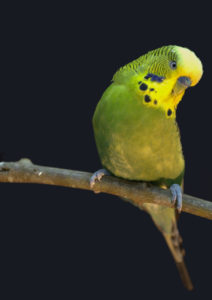And how the flight behaviour of bees and birds is revolutionising robotics

Mandyam Srinivasan is a professor of visual neuroscience at the Queensland Brain Institute and the School of Information Technology and Electrical Engineering of the University of Queensland. Famous for his distinctive studies on the visual systems of bees and, more recently, birds as well, Srinivasan is the recipient of the [Australian] Prime Minister’s Prize for Science and a Fellow of the Australian Academy of Science and Royal Society. Srinivasan’s studies on the navigational behaviour of bees have had profound impact on technological applications, such as autonomous robots and aerial vehicles.
You graduated with a Master’s degree from IISc in Applied Electronics and Servo Mechanics. Then you changed fields, studying vision animals. Did IISc contribute to that transition?
IISc got me interested in engineering-based inquiry. The nice thing about IISc was that it was not just a teaching institution; it was also a research-based institution. It taught me to ask questions that you normally would not think of asking, build equipment, and design experiments to try and answer those questions. But I must say that the stimulus to do all this came from my ME thesis supervisor, BL Deekshatulu, as well as MAL Thathachar.
How did you end up studying vision in honeybees? And you now also address similar questions in birds…
I didn’t quite choose to study bees myself: I joined in a department in Switzerland where they were working with bees—the Italian honeybee—and that sort of fascinated me and I decided to stick with it. Traditional honeybees are very interesting because they have good colour vision and are trained easily. They are programmed to go look for food and learn over time, and do whatever they need to, to get to the food. So you can train them and explore various questions because they come to you again and again in search of food.
Traditional honeybees are very interesting because they have good colour vision and are trained easily
With the birds it was more circumstance and the fact that when I started studying birds, I was living in Australia. The Budgerigar, native to Australia, is easily domesticated, easy to train and maintain. It’s a cruising bird, not a hovering bird. So it seemed perfect for our experiments.

How do bees navigate from point A to B and back?
There are two types of navigation: short-term navigation and long-range navigation. Long-range navigation is something that a lot of people are interested in and are working on. They study birds, for example, those that are sensitive to magnetic fields and use them to navigate. Some birds seem to use the sun or polarised light in the sky as a compass, like bees do. How they measure distance traveled is not very well known. However, our own research focuses on short-term navigation, specifically, guidance-based navigation: going through an obstacle course, or landing or avoiding an obstacle. Moment-to-moment navigation is what we are looking at.
Some birds seem to use the sun or polarised light in the sky as a compass, like bees do
Initially, it seems like bees learn what direction to fly in and how far to fly. Then they simply reverse that signal to fly back. But it is actually when they go many many times back and forth that they start to learn more about the landmarks they encounter along the way and they tend to rely more on the landmarks for navigation. So if you move a landmark near the food source then they will go searching for the landmark. They will then rely less on their odometric signal (that helps them gauge distance travelled from hive to food source), and more on landmarks that help identify the goal. If the landmark is displaced very far away, then they will be like, ‘What is happening? I have traveled a long distance and I still haven’t found the food. Something is wrong.’ Then they will start to look around and come back to where their odometer told them the right spot was. Bees have this back up system, but their waiting depends on the level of experience they have. Once they have learnt a particular route to a food source they will go back and forth along the same route. This has been studied more carefully with ants, because you can watch them more closely and easily as they are not flying.
If a honeybee goes out and discovers a patch of flowers for nectar, what direction would it take to return to the hive?
Exactly the opposite, with a 180-degree turn. It just reverses the vector. To find the flower, it built up a sort of a vector; so what it is doing as it is flying looking for food is incrementally breaking up that trajectory into small straight line segments and adding these small vectors to get a resultant vector for the whole journey. Any time it decides to go home it has got that resultant vector, which is reversed by 180 degrees in order to return home.
Why would one expect honeybees, whose lifespan is very short, to do such intense learning?
Well, it is even more important to learn for an animal with a short lifespan because they do not have much time to do what they need to do. You have to learn quickly. For example, today’s rewarding nectar-bountiful flower in a particular location could dry out in three or four days. And then something new will bloom. So the bees have to constantly be on the lookout and learn new locations for new flowers. Quite often, when a bee visits a given flower several times, even before that flower starts to dry out, it starts to look for its next possible site in anticipation of the current source drying out. They need to do all this because their working life outside the hive is only about three weeks. Bees live for about six weeks in total. The first few weeks are spent inside the hive, tending and nursing to the younger ones. The last three weeks are spent as a forager. I suppose the colony requirement is that they forage as much as they can at that time. So they have to be agile, and learn new things.
What is the difference between obtaining information when one is stationary and when one is moving?

A lot! Maybe in our case it is not that different because we have stereo vision. Even sitting in a chair like this [pointing at the chair], I have a sense of the three-dimensional structure of the world because I can tell how far away you are, but that is because my eyes are far apart and I can pick up distance cues from stereo vision. But if I had just one eye, I could not use stereo and that is exactly what insects are like. Then the only way I can see how far away you are is actually for me to move along some straight line and then by measuring how rapidly your image is moving, and, by comparing that with how my eye is moving, I can work out how far away you are. So it is a very active way of seeing and is called active vision where you have to do something to get the image. You cannot extract the information by sitting in one spot.
Is there a difference in navigation behaviour among different species of birds and bees?
That probably hasn’t been studied a lot. There is still a lot to be looked at. Certainly I suppose that bees that have very short range navigational needs would not need to learn the navigational skills that migrating birds use to travel between continents. The thing that they find with some of these forest-dwelling sting-less bees in South America, and I think they have them in Australia as well (I don’t know if they are here in India)—they are able to signal directions in three dimensions, not just two dimensions because often the food source can be in a forest, and they may need fly high up. So they have all sorts of elaborate acoustic signals which they emit during the dance, which they also use to communicate height. That is something we have not yet looked at in many of these species; we just look at the visual aspects of the dance but we are not using microphones to pick up the vibrations, which may even be used to transmit information about the colour of a flower. We don’t know so far whether they do this or not, but there could be lots of other codes that are airborne or transmitted acoustically that we again don’t know of. In fact, the bee dance is also done in the darkness of the hive, so there is no visual communication there and it is mostly molecules of air vibrating. Other bees follow the dancing bee, and pick up the vibration of particles of air. And then of course a lot of substrate acoustic communication happens where they press their buzzing abdomens to the floor of the honeycomb. People are just starting to look at that.
With insights from insect navigation these studies have already been applied in development of autonomous aerial vehicles and robots
What are some of the most exciting applications of these studies?
There’s a movie called The Eye in the Sky—they send a tiny remote-controlled winged robot that goes inside a building and sits on the ceiling or something, and picks up information about terrorists who are plotting their next attack in that building. So this device has vision as well as acoustic information that is being transmitted back to some ground station. Stealth can be used for both good and bad purposes. In some sort of disaster situation, where for example you might be looking for injured people, it would be useful to have something which can travel to small spaces that does not rely on GPS. With insights from insect navigation these studies have already been applied in development of autonomous aerial vehicles and robots.




